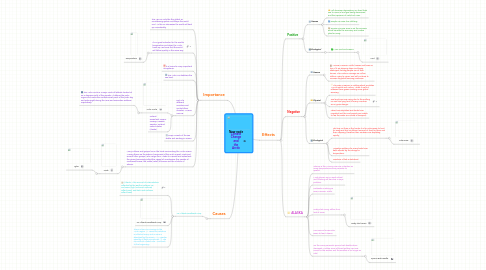
1. New node
2. Importance
2.1. The ARCTIC acts like the global air conditioning system and keeps the world cool. As the ice decreases the world will heat up considerably.
2.2. It is a great indicator for the worlds temperature and when the Arctic heats up, we know that the world will follow quickly in the same way.
2.2.1. Temperature
2.3. It is home to many important ecosystems.
2.4. The Arctic Ice stabilizes the sea level.
2.5. Part of 8 different countries and controls their climates. ACRTIC CIRCLE.
2.5.1. Arctic Circle
2.5.1.1. The Arctic Circle is a major circle of latitude located at 66.5 degrees north of the equator. It defines the polar region and marks the southernmost point of the polar day and polar night during the June and December solstices respectively.
2.5.2. Iceland, Greenland, Russia, Norway, Canada, Sweden, Finland, United States (Alaska).
2.6. Keep currents of the sea stable and working in unison.
2.7. Many cultures and groups live in the lands surrounding the Arctic Ocean. Among these are the Eskimo (comprised of the Inuit, Inupiat, Yupik and several other groups), who range from Alaska to Canada and Greenland, the Saami (previously called the Lapps) of Scandinavia, the Nenets of Northwest Russia, the Sakha (Yakut) of Russia and the Chukchi of Siberia.
2.7.1. Inuits
2.7.1.1. Igloo
3. Causes
3.1. Ice Albedo Feedback Loop
3.1.1. (Albedo = the amount of solarradiation reflected by the Earth's surfaces. Ice and snow (Light coloured surfaces) reflect most, and dark rock surfaces reflect least)
3.1.2. Ice Albedo Feedback Loop
3.1.3. There is less ice coverage in the Arctic region --> Less solar radiation is reflected away, and is more is absorbed by the ocean --> A greater qauntity of heat is produced --> The ice melts at a faster rate... and back to the beginning!
4. Effects
4.1. Positive
4.1.1. Human
4.1.1.1. Will decrease dependency on fossil fuels sue to more oil and gas being discovered and the exposure of metal-rich ores.
4.1.1.2. People can wear less clothing.
4.1.1.3. Tourism in some areas is on the increase, which benefits the economy and creates jobs for many.
4.1.2. Ecological
4.1.2.1. More Cod and Prawns
4.1.2.1.1. Cod
4.2. Negative
4.2.1. Human
4.2.1.1. As PERMAFROST melts, houses and trees on top of it are slipping down and being destroyed, forcing people our of their homes. This costs on average 35 million dollars a year to repair, and will continue to increase as global warming continues.
4.2.2. Physical
4.2.2.1. The PERMAFROST is melting which acculates 11% of worlds soil carbon. When it melts it releases these gases creating more global warming.
4.2.2.2. Sea levels are now rising due to the melting ice and low lying land of many countries are in grave danger.
4.2.2.3. Lakes have depleted and ducks have migrated and the inuit people are unable to use the water as a mode of transport.
4.2.3. Ecological
4.2.3.1. The less ice there is the harder it is for Polar Bears to hunt for seals and find a sufficient amount of food for them and their offspring, therefore their numbers are depleting rapidly.
4.2.3.1.1. Polar Bear
4.2.3.2. Migration patterns for many birds have been altered by the change in temperature.
4.2.3.3. Numbers of fish is disturbed.
4.3. ALASKA
4.3.1. Salmon in the YUKON river are in decline as rising temperatures allow parasites to spread.
4.3.2. Most glaciers are in rapid retreat and flooding will become a major problem.
4.3.3. Fairbanks is sinking as PERMAFROST melts.
4.3.4. Husky sled racing suffers from lack of snow.
4.3.4.1. Husky sled racers
4.3.5. Less sea ice forces Polar Bears to feed i towns.
4.3.6. On the Kenia peninsula spruce bark beetles have damaged 4 million acres of forest as they can now survive in the winters and the weather is no longer as cold.
4.3.6.1. Spruce Bark Beetle.
